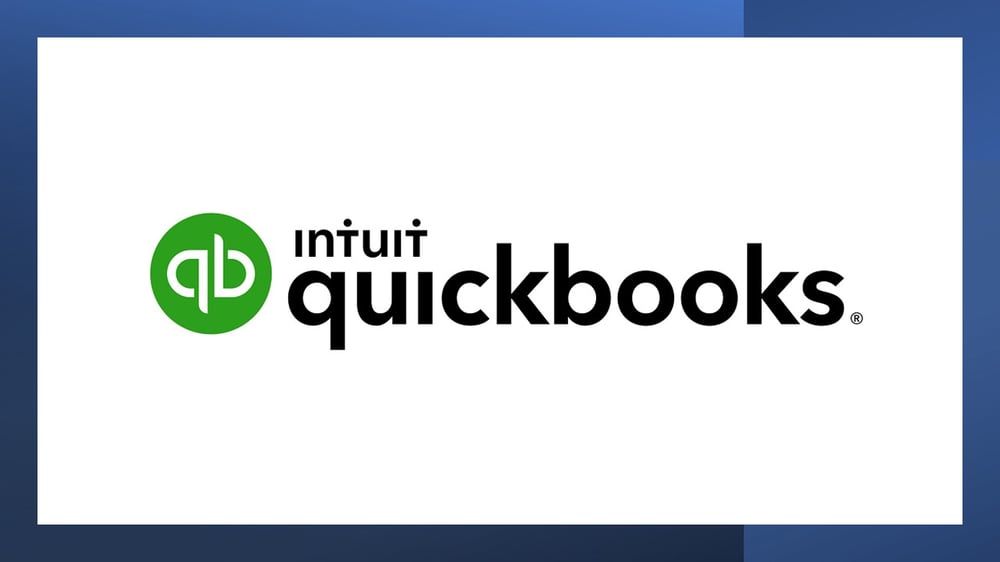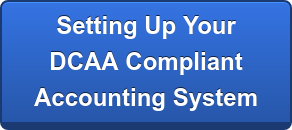
Can I use QuickBooks for Government accounting?
Many people think that to be compliant with DCAA requirements you cannot use QuickBooks for your accounting system. While QuickBooks is not designed to meet the FAR and DCAA requirements (it is not a government approved accounting system out-of-the-box), and it has some limitations on meeting all the requirements, there are ways to make a QuickBooks system meet all the government's requirements.
If you’re reading this you may already know that DCAA stands for Defense Contract Audit Agency and since 1965 they have been responsible for auditing pretty much all Federal contracts for DoD, GSA, FAA, NASA, etc. Typically the DCAA follows a very prescribed program in auditing an accounting system. It is easy to prepare for the audit when you know exactly what they will be looking for. It may not be so easy in figuring out how to make QuickBooks meet all these requirements.
There are 3 major components in converting a QuickBooks system into a government approved accounting system (or DCAA compliant accounting system):
- Structuring QuickBooks in a proper job cost type format
- Providing current QuickBooks information to an external engine to calculate job cost reports and calculate indirect billing rates
- Provide a compliant labor recording system that interfaces and reconciles with the QuickBooks file
The first component is the structure of QuickBooks. The major structure elements are clearly outlined by the FAR and the DCAA but include:
- General Ledger set-up, numbered chart of accounts & pooled indirect expenses
- Labor distribution system
- Segregation of direct and indirect expenses
- Identification of direct expenses to single cost objectives
- System capability to segregate costs to line item detail
There are obviously many ways to accomplish this within the QuickBooks format. The trick is to not only do this but make the other components compatible with this format and make it easy to apply the other components.
The second component must be done outside of QuickBooks because QuickBooks doesn't have the ability to perform these tasks. The job cost ledger, as sold by Intuit, only includes direct job costs. Data can be exported out of QuickBooks to an external engine or program to perform the indirect rate calculations and the job cost reports. The US Government, specifically DCAA, requires each job (contract and/or Contract Line Item) in the job cost ledger to include appropriate and proportional indirect costs segregated from the direct costs. There are a number of significant requirements that must be met for an approved accounting system in addition to a job cost ledger that includes indirect costs. It must also have separate cost elements, i.e. labor, materials, etc. as well as current month and Y-T-D totals. All costs must be under G/L control, that is the job cost ledger must tie out to the P&L. Furthermore the time keeping system must identify all labor (direct & indirect) by final or interim cost objective to insure time is charged accurately. There must be a way to develop an interim determination of costs. That means monthly hard closings, something not everyone does. And finally, unallowable costs must be consistently segregated in such a way that the Government can be reasonably sure they are not being mis-charged in violation of Federal Acquisitions Regulations (FAR). At ReliAscent we have systems that can accomplish these tasks.
Finally the third component is a timekeeping system for tracking labor and then properly transfering labor into the accounting system. This labor distribution system is one of the most critical components of a compliant system (See our previous blogs on timekeeping).
“Will this type of system satisfy US Government auditors?” “Can QB be made compliant? What does QB need to meet FAR requirements?” Not without the changes mentioned above. With these changes all government requirements can be met. And, yes QB can be made compliant as noted above. In addition to changes in the “accounting system” there must be scrupulous adherence to FAR regulations to avoid problems. This usually requires a bookkeeper/accounting staff that has some experience with the FAR. Things like no alcohol, no business/first class travel, no travel clubs, no advertising costs, per diem travel rates, total time recording, burdensome audit and paperwork requirements are topics that require strict and consistent compliance. There are some other changes necessary to treat employee labor correctly (especially uncompensated overtime) but not covered in this brief discussion.
Above I mentioned “indirect rates by pool” and to many readers this may sound like Greek but put simply it means you must group your indirect costs in one or more “pools” or buckets and apply/allocate them in a fair and equitable manner to direct costs. You provide health insurance, dental, vision, paid time off and legal holidays as part of your benefits package. Some of these employees work on projects or jobs that are billable to customers and some are support staff, i.e. direct and indirect employees. The costs of your benefits, i.e. Fringe must be equitably allocated to all labor dollars whether direct or indirect. This can be done in a one-rate system by using just a G&A pool/bucket (Total G&A pool divided by Total Direct Costs equals G&A rate).
This is just a cursory view of how ReliAscent can make a QuickBooks system compliant. There are so many FAR and DCAA requirements that you really also need an expert in these regulations running the system to make sure you maintain compliance. That is exactly what ReliAscent does for our clients. Who is doing that for your books?
